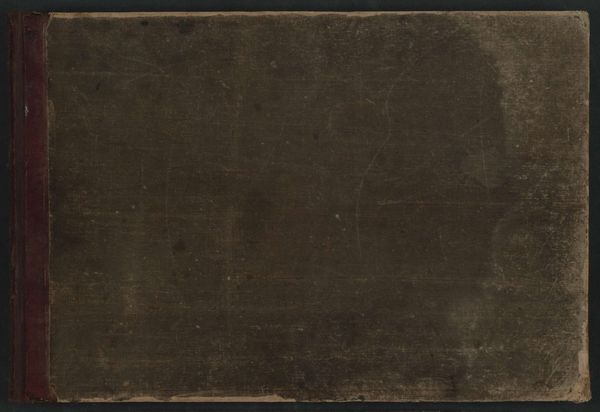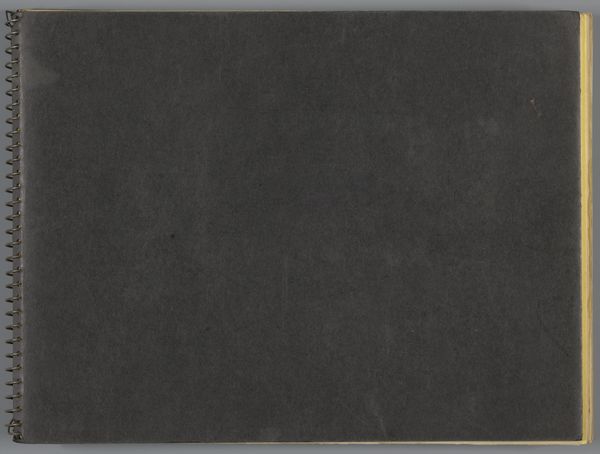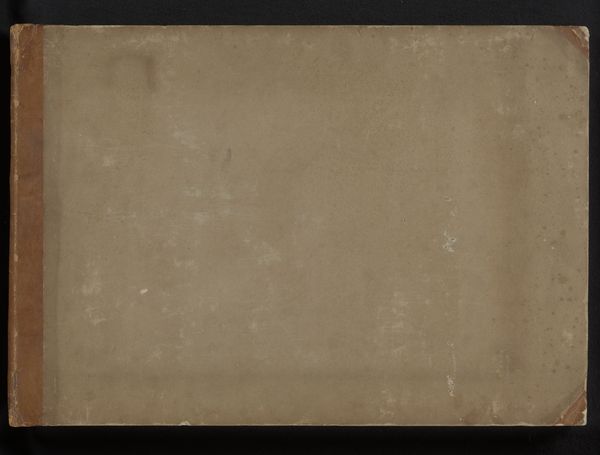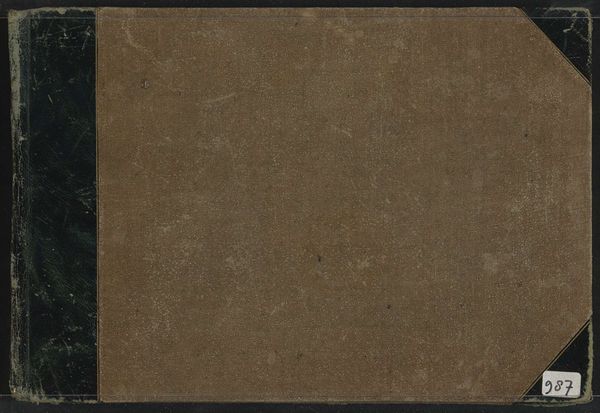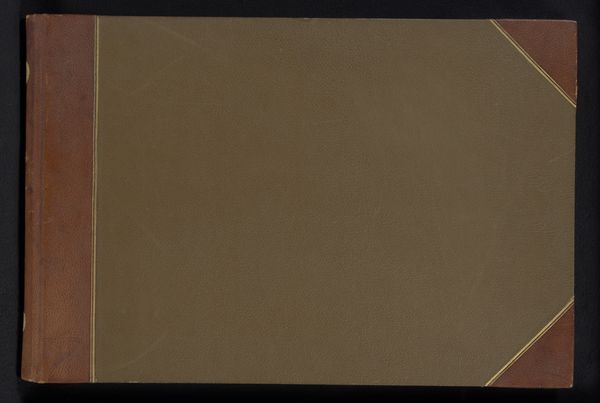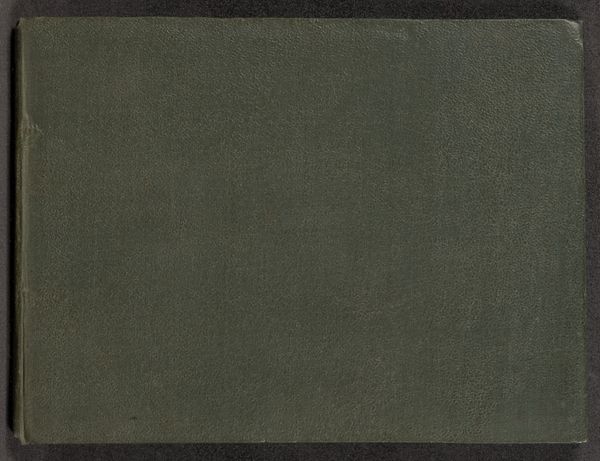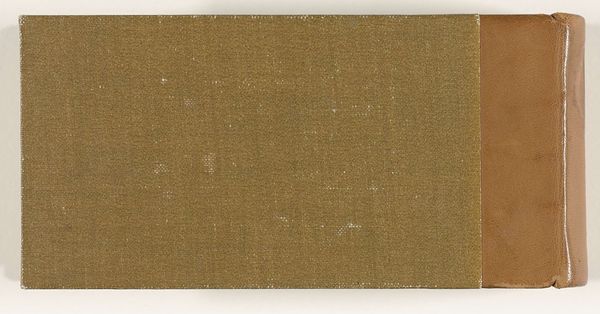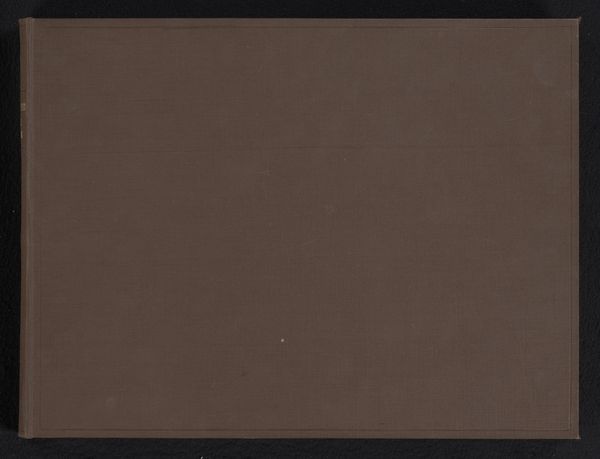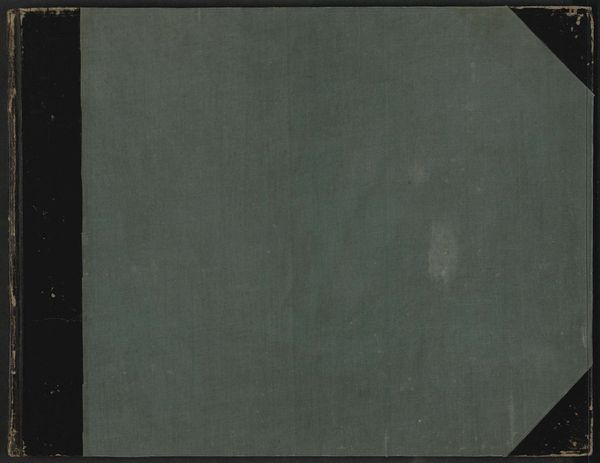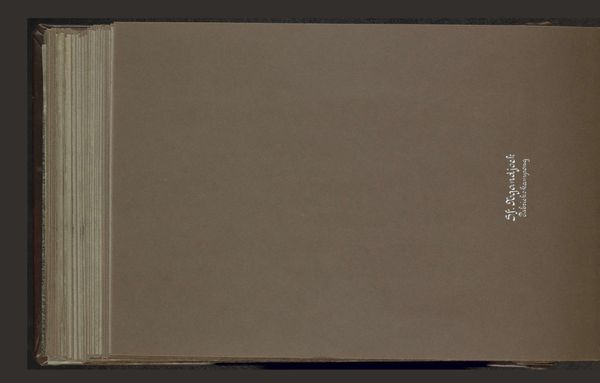
collage, print, photography, albumen-print
#
collage
# print
#
asian-art
#
landscape
#
photography
#
albumen-print
Dimensions: height 303 mm, width 440 mm, thickness 25 mm
Copyright: Rijks Museum: Open Domain
Editor: Here we have an album from 1896 titled "Album of the Japan-China War 1" by Hakubundo, incorporating collage, prints, albumen prints, and photography. At first glance, the binding appears almost minimalist in its simplicity, almost solely dedicated to function. What formal elements stand out to you? Curator: The composition immediately strikes me as intentional, with distinct zones created through varied textures and material application. Notice the juxtaposition of the smooth, unbroken expanse with the corner and spine, drawing our attention to the physicality of the object itself. It’s not merely a container, but a structured surface. How does this influence your understanding of its content? Editor: It's interesting that you point that out. I almost didn't notice the textural shifts! I was primarily interested in what imagery lay *inside* the binding, not so much the cover itself. If the covering is an intentional feature, how does the "minimalist" cover shape my reading of the album's internal, unseen imagery of war? Does it intentionally strip back ornament, acting as a quiet moment of contemplation before engaging with intense imagery? Curator: Precisely. The restricted palette and deliberate use of texture directs us toward a specific reading. The creator clearly understood that an object's form contributes as significantly to the interpretation as the object's representational function. This careful balance contributes to the overall reading, no? Editor: It does now! I'll admit, I hadn't thought about the impact of binding materials like this before. I think I will be far more aware from now on. Curator: Indeed, recognizing the material elements at play provides richer opportunities for interpretation.
Comments
No comments
Be the first to comment and join the conversation on the ultimate creative platform.


